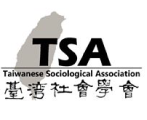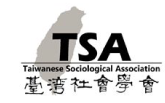主持人/ Chair:林宗德
評論人/ Discussant:劉育成
發表人/ Presenter:劉育成(東吳大學社會系副教授)
題目/ Title:量化人性及其不滿:以自動駕駛科技為例
摘要/Abstract:
在探討人工智能相關議題上,最終都會指向何謂人類智能的這個問題:它如何運作以及為什麼它以某種方式運作。在一定程度上,我們可以說,人工智能的目的是量化人類智能及其運作方式的各個面向。著名心理學家弗洛伊德在他的著作《文明及其不滿(Civilization and its Discontents)》中討論了人類本能與文明的矛盾關係,前者的壓迫促使後者的發展,且後者的發展也需要對前者進行控制。如此一來,前者的解放成為人類無論自願與否維護文明觀念的不可避免的命運。同樣地,我們也觀察到,量化與人性之間存在著矛盾或辯證的關係。儘管我們不清楚是否能接受一個可以用演算法來量化或再現一切的未來,但這種情況正在發生,並且似乎對人類世界產生了巨大的影響。本文透過以人工智能為基礎的自動駕駛技術之發展為例,探討了對人性進行量化以及其不滿的觀點。本文嘗試提出的論述是,關於人性的獨特性的辯論,在多大程度上是建立在社會學家Niklas Luhmann所謂的「雙重耦變性(double contingency)」的概念之上。再者,就人工智能而言,其透過將人與機器之間的溝通從「關於(about)」轉變為「與(with)」,進而消除「雙重耦變性」,亦即將人類推向靠近機器的一方,而不是相反。在自動駕駛技術的情況下,這可能導致人性減少而非增加的未來。根據STS及科技哲學的觀點,尤其是Latour有關人類與技術物相互構成社會事實之討論、Hayles的「認知組裝(cognitive assemblage)」概念,以及俗民方法學其對人工智能發展的潛在貢獻等,本文將對人性的量化及其對人機世界的意義進行分析。
關鍵字:量化人性、人工智能、自動駕駛、雙重耦變性、俗民方法學、認知組裝、行動者網絡
發表人/ Presenter:江順楠
題目/Title:Against Techno-Fix? — a Comparative Study of the Golden Rice Project and the BeRICEponsible Campaign in the Philippines
摘要/Abstract:
As the framing of grand challenges sweeps the globe, there is a risk that governments, NGOs, and private sectors may over-rely on technology as a solution to social and ecological problems. To counter this tendency, social scientists have mobilized the concept of “techno-fix” to challenge the effectiveness of technology-based solutions and unveil unintended consequences or intended and hidden agendas associated with technology-centered solutions. However, by treating technology-based solutions as techno-fix, scholars often overlook the pervasiveness of technology embedded in all kinds of solutions and conflate various issues associated with the implementation of technology. Against this backdrop, I carried out a comparative study of two agrifood solutions to malnutrition in the Philippines to understand what technology “does” in each agrifood solution. The first one is the Golden Rice Project, aiming to develop a new type of genetically modified rice for Vitamin A deficiency and carried out by the International Rice Research Institute. The second one is the government-backed BeRICEponsible Campaign, promoting brown rice consumption nationally and executed by the Philippine Rice Research Institute. I collected data from semi-structured interviews, participatory observations, and printed materials published by the projects of these two agrifood solutions. I begin my analysis with the Golden Rice Project. My analysis demonstrates that to render golden rice as a solution to malnutrition, the project team was required to maintain continuous “synchronization” between gene expressions and societal expectations along the rice breeding process and over time. This means that this new variety of golden rice not only needs to contain a higher amount of beta-carotene but also needs to maintain the same level of yield performance as the traditional variety. This indicates that, contrary to the popular image of GM rice being a disruptive innovation, the goal of the series of breeding experiments was to enable golden rice to fit into a specific social context of rice production and consumption to replace the original rice variety seamlessly. In contrast to the Golden Rice Project, the goal of the Brown Rice Campaign was not to synchronize the project output with the farmers' or consumers’ expectations but to actively reshape consumers’ preferences. My analysis shows that at the center of the BeRICEponsible campaign’s effort was to create an enabling environment that could give rise to the possible existence of brown rice-consuming citizens. But contrary to the popular image of the brown rice campaign as a social innovation, the campaign mobilized various kinds of technoscience, and all the technoscience was oriented toward creating this enabling environment, such as the pedal-style milling machine or the new cooking procedure. The comparison of two agrifood solutions to malnutrition demonstrates that both of them are attentive to technological and social aspects, but the pattern of interconnection between the technological and the social is different. In summary, this research suggests that scholars should move away from the concept of “techno-fix” and explore other concepts that could be more generative and attentive to nuanced differences between different types of solutions.
Keyword: techno-fix; GM rice; brown rice, malnutrition; grand challenge
發表人/ Presenter:葉嘉茵(國立中山大學社會學研究所碩士生)
題目/Title:COVID-19的數位接觸者追踪:在台港人的防疫策略
摘要/Abstract:
自COVID-19大流行,各國在疫情階段都推出數位治理防疫政策來阻止疫情蔓延,本文以香港的安心出行和台灣的簡訊實聯制政策為例,透過質性研究取徑,深度訪談16位經歷兩地政策的在台港人,並以STS研究取徑中公民認識論的概念,探討防疫政策所形塑的人口治理模式,如何影響不同國家社會中民眾的日常生活與移動。
本文初步發現,多數受訪者表明在港拒絕使用數位追踪工具、選擇紙本登記,在台則相反,也針對兩地政策發展出各種隱微的抵抗策略。首先,本文指出台港兩地數位治理工具的技術透明化程度,影響香港民眾的使用意願。其次,數位治理工具與其他人口治理政策的扣連程度,促使民眾質疑政府使用數位工具的真正目的,進而對此發展出個人策略,例如另備一台手機和電話咭應付政府強制執行的安心出行政策。此外,台港兩地民眾對於個人隱私的關注程度不同,使其在台灣採取避免公開書寫全名、公開資訊的登記方式,如紙本登記選填大眾化的英文名字,或只填中文姓氏。本文主張,移動的在台港人的公民認識論,除了凸顯原有香港人對於科技與專家的信任,在台灣的防疫選擇更反映了基於台灣社會的集體道德壓力而選擇扮演順從的「好公民」。
關鍵詞:COVID-19,數位治理,數位接觸者追踪,人口排除與管制,防疫策略
發表人/ Presenter:陳韋宏(國立台灣大學社會學研究所博士生)
題目/Title:槓鈴處方?中高齡大重量訓練的風險、安全與信心
摘要/Abstract:
台灣運動科學與醫學社群轉譯「運動即良藥」浪潮,提出運動處方解決高齡化社會帶來的人口衰退問題。屏東潮州林永昌醫師提出中高齡大重量訓練的技術創新版本「枯木逢春法」,以簡化版大重量運動來管控此一運動處方的風險。在一個新興的技術網絡中,不同的技術工作者如何能夠調和、馴服與管理技術本身的異質風險?本文主要分析素材是枯木法台北N據點的田野觀察,並輔以訪談與檔案資料。本文概念化馴化風險、展演安全與信心管理來回答研究問題。首先,枯木法的知識生產者,主要藉由重量訓練的自然動作模式以及一套標準程序來馴化中高齡重量訓練的可能風險。其次,在這一技術創新版本,枯木法有意識地選擇能夠操演多人護槓等安全措施的重量訓練動作,以能夠向潛在使用者展演安全。最後,枯木法的基層實作者,會大量援用運動科學與醫學知識來為這一技術提供正當性,以及藉由數值化進步幅度來管理使用者的信心。透過枯木法這樣一個形成中的新興技術網絡,本文得以進一步深化風險、安全與信心之間的相互關係,指認出它們必須互相依存才能調和技術本身的異質風險。
關鍵字:運動科學、枯木逢春法、技術創新、技術網絡、風險


